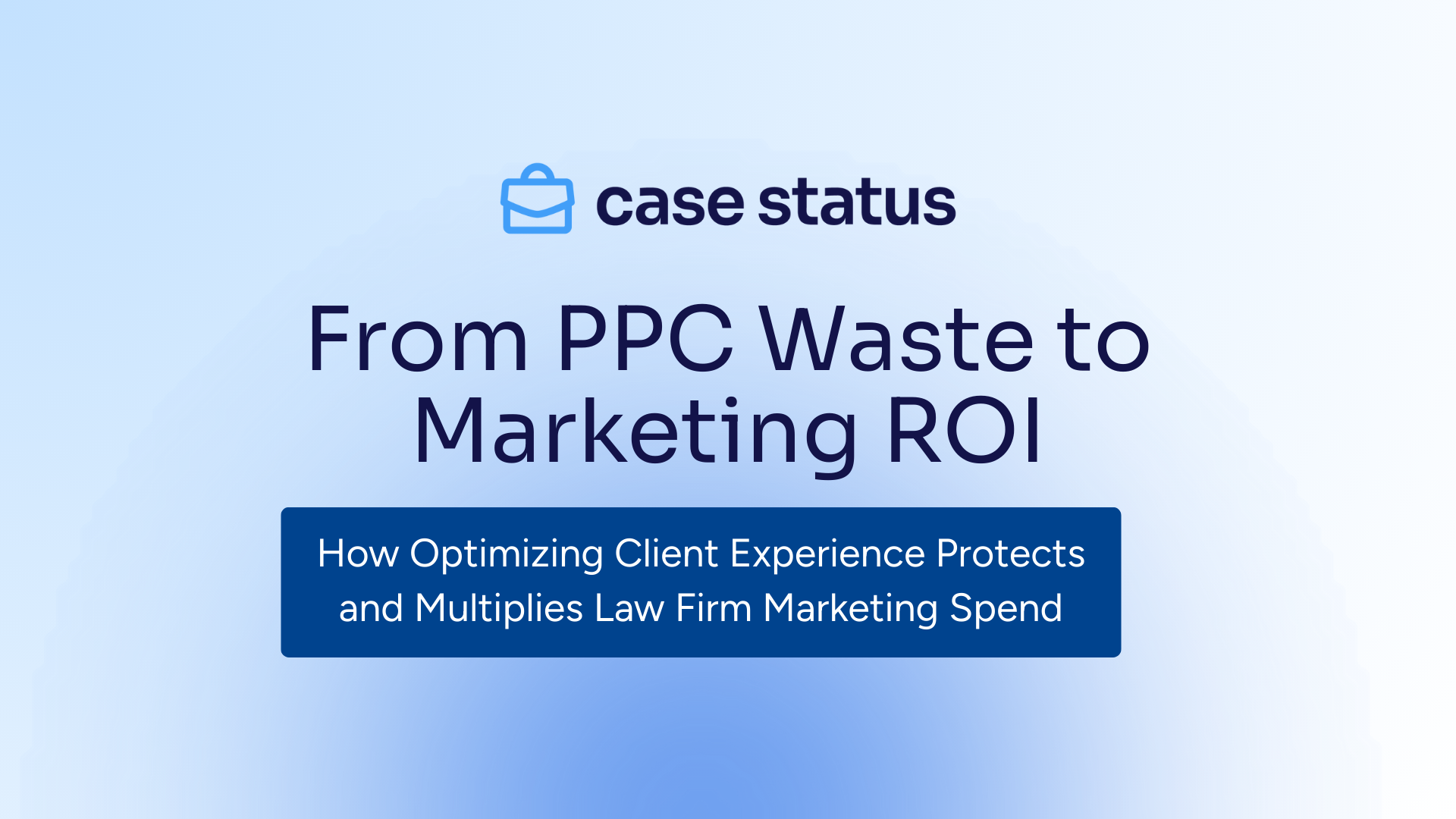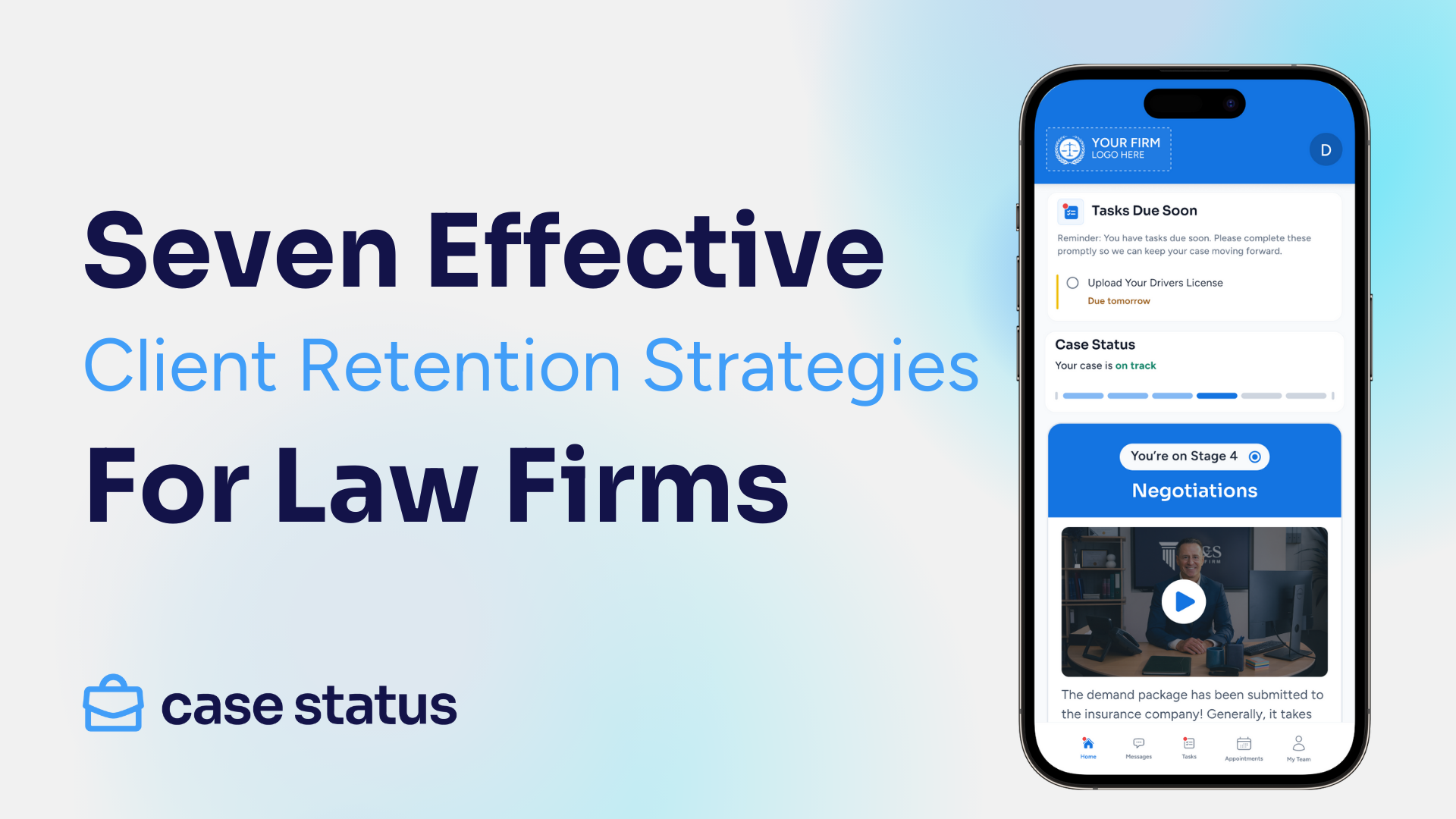
1 Million Client Logins Is a Game Changer. In the fast-paced world of law firms, Pond Lehocky Giordano recently achieved a remarkable milestone: becoming the first law firm to reach 1 million client logins to their 5-star branded mobile application (in just 16 months)!
This extraordinary achievement is a testament to their unwavering dedication to the client journey and the client experience. It's a shining example of how a firm who delivers great legal services and drives exceptional client service technology can yield happy clients who, in turn, bring additional benefits to the firm. Each client login represents a person who has been empowered in their case or matter, who has had excellent service from their legal team, who has simplified communications (bye-bye email, text and phone), and who has otherwise tracked their progress to a great legal outcome.
Pond Lehocky Giordano has seen amazing business outcomes including a massive reduction in emails and phone calls, a huge gain in OPEX, and earned growth from direct client referrals and online reviews that will serve as a business tailwind for years to come.
1 Million Client Logins Is a Game Changer: Read the case study or watch the video.
We are well past the time when the concept of proactive, responsive, and ever-improving client service is a “nice to have” concept for law firms. No matter the size of your firm, its location, or the areas of law its attorneys practice, client service should be as core an offering of your law firm as the legal services it provides.

The Costs of Not Prioritizing Client Service At Your Firm
Yet, today, look no further than online reviews, panel discussions with general counsel, and bar complaints for examples of attorneys’ and law firms’ substandard approaches to client service. From failing to keep clients abreast of what’s happening in their legal matters, to going long periods of time without contacting them, to failing to take an interest in their business and Industry attorneys are still leaving much to be desired with client service.
In our experience, many law firms view ramping up their client service operations as sunk costs in staffing or technology they will never recover. Putting aside for the moment how wrong that belief is, the opposite is all too true. By not focusing on client service at their firms, attorneys incur costs—some hidden, some not—that hold back their revenues and overall growth. We will explore these costs in detail, referencing real-world examples of how material these costs can be.
Cost #1: Losing Clients
When law firms cannot provide at least adequate client service, such as responding to clients’ emails, calls, or text messages within six to eight hours or periodically contacting them even when there are no developments in their matters, clients make their displeasure known. Some clients will take their matters elsewhere. Others will wrap up their matter with the firm but not bring any new ones to it. Others still may leave negative online reviews or even contact the state Bar.
A Case Status survey of consumer-based law firms estimates that 2% to 5% of cases churn before completion. Not only does this mean no revenue from these cases, but the opportunity cost of wasting staff time and resources doubles the effects. For every $1 million in revenue produced in a year, this amount of churn would cost a firm $20,000 to $50,000 in lost revenue.
Cost #2: Lack of Firm Growth
A side effect of losing clients is that law firms may miss out on the ability to offer new services or practice areas. A firm that serves start-ups could find that within a year or two of working with its clients, they need additional guidance regarding taxes, mergers and acquisitions, and employment law. But if the firm tends to not hold on to those kinds of clients for long enough to get to that point, the firm will not see what opportunities exist for it to grow its offerings to better serve its clients. As a result, it may have difficulty increasing the lifetime values of its clients.
Cost #3: Damaged Referral Partnerships
As we all know, word spreads quickly within a legal community about the good things—and bad things—happening at law firms. If a law firm is not prioritizing client service, any clients referred to the firm who are unhappy with the client service they’re receiving may let the people who referred them know. Referral sources might let one instance of subpar client service go, but if it becomes a pattern, or other referral sources urge them to stop referring clients, they’ll take their referrals elsewhere.
Cost #4: Negative Reviews
A client who feels they’re receiving subpar client service from a law firm is unlikely to tell their friends, family, or business contacts that they should contact that firm regarding a legal issue they’re dealing with. Or, in a worst-case scenario, these clients will go to a public online review site and air their opinions for everyone to see.
In the case of Pond Lehocky Giordano, the importance of online reviews and direct referrals was understood, but few efforts were moving the needle. Research showed that two-thirds of potential clients use direct referrals in the lawyer hiring decision. The firm estimated that for workers’ compensation clients, the figure was more likely one-third. In other words, for every 100 new prospects entering the firm’s intake channels, that number should have been approximately 133. By using client service technology, the firm began seeing referrals closer to that figure on a percentage basis.
See the impact of promoters and detractors
Cost #5: Burned Out Employees
Few law firm managers look around their firms and say, “We could use more inefficiencies and should create unnecessary tasks for our attorneys and staff to complete.” But that’s exactly what those managers do when they refuse to prioritize client service.
When law firms do not prioritize client service by, for example, using technology to automate client updates, information requests, the creation and signing of documents, or preparing clients for the next steps in their legal matters, they create more work for their attorneys and staff. The print the document/sign the document/scan the document/email the document workflow of 2010 should stay there. So should the phone calls and emails where an attorney or staff member discusses the six windows they’re available for a conversation with a client over the next few days and then waits for the client to respond with their availability. (Instead, the attorney or staff member should send a link through which the client can directly schedule a meeting, based on guidelines the attorney or staff member has created for scheduling meetings).
Firms that prioritize client service when communicating with clients about their legal matters free up their attorneys and staff to work on high-value tasks not delegable or outsource-able to technology. They also ensure that their best-case scenario for how frequently their attorneys and staff communicate with their clients becomes the default scenario.
Pond Lehocky Giordano estimated that each inbound phone call or email took about five minutes to reply to. Moreover, roughly 90% of inbound callers were asking the same question: “Where am I in my case?” For every 1000 inbound calls the firm received in a week, 83.3 staff hours were required to field these calls. Once client service technology was employed to recoup this time, productivity—and morale—shot up.
See how much time you can save with Case Status
Cost #6: Weakened Firm Culture
When a law firm does not prioritize client service, the attorneys and staff who regularly communicate with clients will bear the brunt of it. They will be on the receiving end of emails, texts, and phone calls from unpleasant or anxious clients who feel that way because their attorney is not regularly updating them on the status of their matter or previewing what is coming next. Attorneys and staff might also be stressed out because they’re constantly chasing unresponsive clients ahead of impending deadlines. They may feel like they’re always putting out fires instead of moving their clients’ matters forward. As a result, these attorneys and staff might develop a contagious negative demeanor that drags down office morale and poisons the culture. This could increase turnover within a firm, forcing the firm to spend precious time and money on recruiting, hiring, and training new attorneys and Staff.
Compare that to the culture within a firm where clients are happy because that firm prioritizes client service. The firm’s attorneys and staff communicate frequently with its clients no matter the status of their legal matter, send them birthday and anniversary cards, and treat them like it is a privilege to call them their clients. Those happy clients rub off on those attorneys and staff, making them happy and productive, boosting morale and retention.
Cost #7: Diminished Reputation
In every legal market and in every practice area, some law firms stand out from the pack. The way their managing partners or executives run these firms is the envy of their peers (and secretly, their competitors). Those firms are innovators and thought leaders. Clients know it, referral sources know it, the media knows it, judges know it, and lateral attorneys and staff know it. A key similarity among these firms is their approach to the business of law, specifically their understanding that clients have been spoiled by Amazon, Nordstrom, Trader Joe’s, and other companies known for their focus on customer service. These firms know their clients expect a similarly high level of customer service from any entity they do business with. These firms’ focus on, and investment in, client satisfaction is a key driver of their growth, which fuels their ability to invest in initiatives that make their firm more efficient and profitable, which allows them to continue to invest in client satisfaction and keep this flywheel spinning. Firms that don’t prioritize client service will not be seen as innovators or thought leaders. Too many clients and too many referral sources will know that those firms do not walk the client service walk.
Without the ability to consistently turn clients into advocates for the firm and earn referrals to new ones, these firms won’t steadily grow their operations, likely keeping them from investing in systems, processes, and technology that differentiates their firms from their competitors.
Now is the time to invest in client service
No matter what areas of law your law firm practices, today those practice areas are more competitive than ever. Unfortunately, they will only get more competitive as barriers to entry dissolve, including ethical rules preventing non-attorneys from owning firms. Most clients won’t be able to tell how magnificent of a brief you filed on their behalf or why your negotiations regarding one of their recent deals should be the subject of a Harvard Business Review case study. But they will be able to tell if your firm is prioritizing their satisfaction through the client service it provides.
They will know whether your firm promptly answers their emails, texts, or phone calls. They will know whether your firm proactively contacts them about developments in their matter or to make sure their circumstances have not changed materially. And they will know whether your firm values them as clients.
No matter how much you think it would cost to prioritize client service at your firm, the costs of NOT doing so are greater—and could potentially be much more hazardous to your firm’s health and wellbeing.



